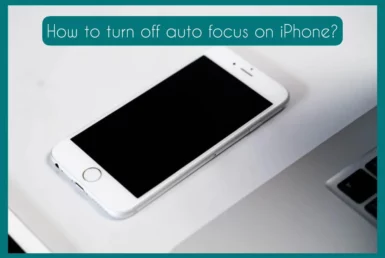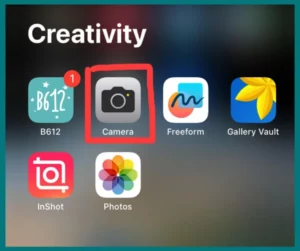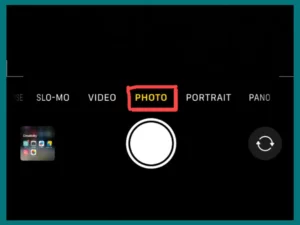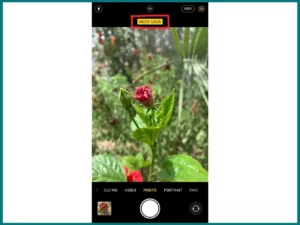Are you struggling to find effective ways to turn off auto focus on your iPhone? If yes, there is no need to struggle anymore because we have covered you.
In this article, we will explain the reasons behind iPhone camera refocusing and provide workable solutions to keep your camera on track. Let’s get started.
Why Does My iPhone Camera Continue to Refocus?
For many users, the iPhone camera’s constant focus might be a difficult concern. Several variables in the device’s hardware and software interactions can be implicated in this phenomenon, which causes the camera lens to continually shift its focus even while the subject is largely stationary.
Modern iPhones often have powerful autofocus systems that continuously adjust focus for the best image quality. These systems use technologies like phase detection and contrast detection.
Environmental variables like shifting lighting, reflecting surfaces, and complex textures can also throw off the camera’s autofocus algorithms and make them need to constantly readjust.
Software bugs or brief processing hiccups may also impact this behavior. While infrequent refocusing might result in clearer images, constant and excessive corrections can be annoying.
Why your iPhone camera frequently refocuses can be explained by understanding the basic technological details and possible causes for this behavior.
How to Turn Off Auto Focus on iPhone?
When you want complete control over the focus point and stop the camera from automatically adjusting, turning off autofocus on an iPhone can be helpful. Here is a detailed explanation of how to do it:
1. Open the Camera App
Tap the Camera app’s icon on the home screen to start it, or slide quickly from the lock screen.
2. Choose the Photo Mode
To select the photo mode, swipe left or right until the default photo capture mode appears.
3. Tap to Focus
Set the focus by framing your shot and tapping on it. Doing so allows you to start a manual focus lock on that specific object.
4. AE/AF Lock Indicator
A tiny yellow box or square will appear when you press the screen to focus. This shows that the auto-exposure (AE) and auto-focus (AF) settings are configured to lock on the selected point.
5. Disable Auto Focus
You can disable auto focus by touching and holding on to the selected focus point for a brief period to stop the camera from refocusing. If autofocus is disabled, a brief yellow “AE/AF Lock” banner will appear.
6. Take Your Picture
At this point, you can take your picture with autofocus disabled. Remember that unless you manually tap to alter the focus point, subsequent photographs will keep the same focus point.
7. Resetting Focus
To activate autofocus once more, just tap anywhere on the screen once more. The camera will then resume using its preset autofocus settings.
When you need precise control over your shot’s focus, such as macro photography, artistic compositions, or taking pictures through glass surfaces, turning off autofocus on your iPhone’s camera can be quite helpful.
It’s a useful tool that gives you the ability to produce visual outcomes more precisely and intentionally than you want.
Manual Focus vs Auto Focus: Understanding the Differences and When to Use Each
1. Autofocus
Auto Focus (AF) is a camera feature that automatically changes the lens to bring a subject into sharp focus. It’s a practical and popular feature that enables the camera to choose the best focus point rapidly and precisely.
In circumstances where speed is essential, such as photographing moving subjects or shooting accidental pictures, autofocus is especially helpful.
In situations where you don’t have time to manually focus, general photography, casual photos, and other uses, it works well.
When to Use Auto Focus
Everyday Photography: Autofocus makes creating clean, clear photographs of everyday occurrences simple.
Fast-Paced Scenes: Autofocus enables you to keep up with the action while your subjects move or the scene changes quickly.
Spontaneous Shots: Autofocus ensures you don’t lose the opportunity while manually focusing on spontaneous or unplanned photographs.
Lack of Control: Autofocus can assist in making up for difficult circumstances where you have little control over the environment, like poor light.
2. Manual Focus
Manual focus (MF) lets you precisely control the focus point by manually adjusting the camera lens’s focus.
You must use this technique for creative control and to achieve deliberate effects in your photographs.
In cases when the autofocus could struggle, such as macro photography, low light, and circumstances where you wish to manage the depth of field, manual focus is especially helpful.
When to Use Manual Focus
Macro photography: When photographing up-close objects, manual focus enables you to precisely alter focus to draw attention to particular aspects.
Low Lighting: Manual focus ensures accuracy in low-lighting situations when autofocus may struggle to find focus.
Creative Control: You can create beautiful and original compositions by deliberately blurring or focusing on certain areas.
Challenging Subjects: Manual focus offers more accuracy in situations where there are complex designs or reflecting surfaces that make autofocus difficult.
Choosing the Correct Focus: Your creative goals and the particulars of your shoot will influence your choice between autofocus and manual focus.
Conclusion
The decision between autofocus and manual focus in photography finds a balance between practicality and freedom of creativity.
While manual focus works best in creative photos, macro photography, and low-light scenarios, autofocus is better suited to everyday situations and photography. Knowing their advantages enables photographers to capture situations with accuracy and purpose.




